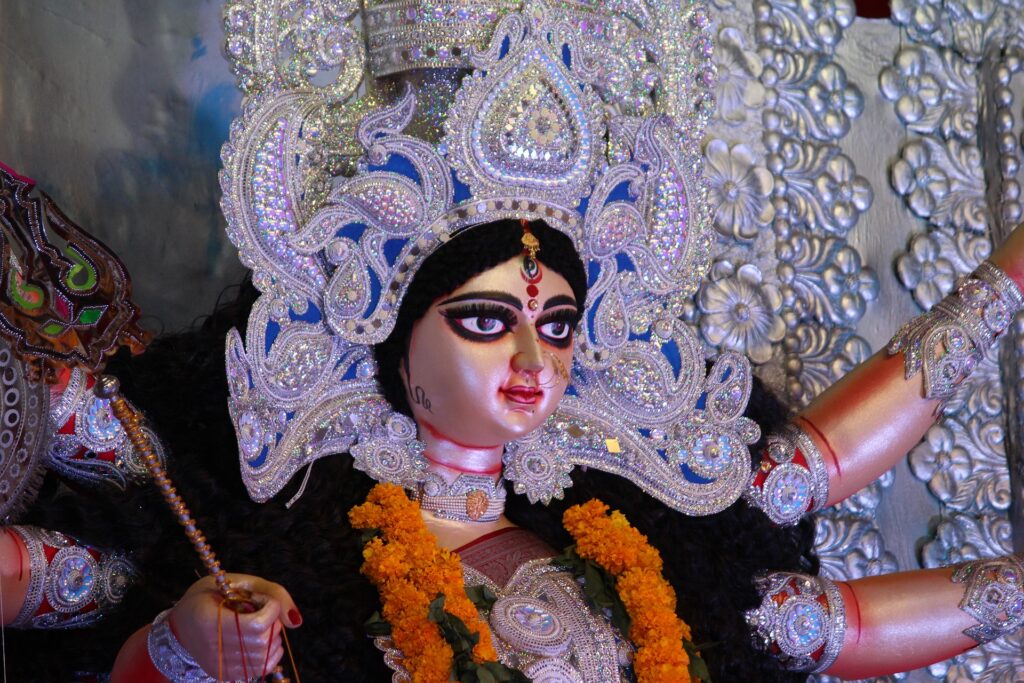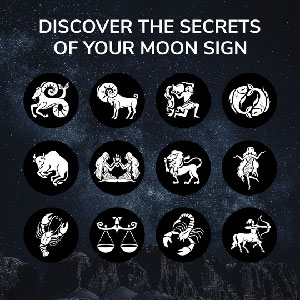
Navratri 2024: Navratri is one of the most significant and widely celebrated Hindu festivals dedicated to the worship of Goddess Durga and her nine forms, known as Navadurga. Celebrated over nine nights and ten days, Navratri holds a profound spiritual meaning, representing the victory of good over evil, devotion, and the power of feminine energy. The festival usually occurs four times a year, but the most significant are Sharada Navratri in September–October and Chaitra Navratri in March–April.
Table of Contents
Why is Navratri Celebrated?
Navratri commemorates the triumph of Goddess Durga over the buffalo demon Mahishasura, symbolizing the victory of righteousness over evil. According to Hindu mythology, Mahishasura was a powerful demon who terrorized the heavens and earth. The gods created Goddess Durga, who fought Mahishasura for nine days and finally defeated him on the tenth day, known as Vijayadashami or Dussehra.
Navratri is also a time for devotees to worship the various forms of Goddess Durga, seeking her blessings for health, prosperity, and protection from evil.
Navratri 2024: Significance of Navratri
- Spiritual Purification: Each day of Navratri is dedicated to a different form of Durga, allowing devotees to focus on specific aspects of life, like strength, wisdom, wealth, and peace.
- Victory of Good Over Evil: It reminds us of the eternal struggle between good and evil forces and the ultimate victory of righteousness.
- Celebration of Feminine Power: Durga represents the divine feminine power, or Shakti, which is the source of all creation, sustenance, and transformation in the universe.
- Community Bonding: It is celebrated with grand festivities, including Garba and Dandiya dances, especially in Gujarat and Maharashtra.
Navratri 2024: States Where Navratri is Celebrated the Most
- Gujarat: The most iconic celebration with Garba and Dandiya dances.
- West Bengal: Celebrated as Durga Puja, with massive pandals, artistic sculptures, and cultural events.
- Maharashtra: Grand celebrations, especially in Mumbai and Pune, with Dandiya nights and Durga pandals.
- Karnataka: Mysuru is known for its grand Dasara festival.
- Tamil Nadu: In the form of Golu, where beautiful arrangements of dolls depict stories from Hindu mythology.
- Himachal Pradesh: Known for Kullu Dussehra, celebrated with colorful fairs and processions.
The 9 Forms of Durga (Navadurga) and their Worship Day-Wise
1. Shailputri (First Day)
- Katha: Shailputri, meaning “daughter of the mountains,” is the first form of Goddess Durga. In her previous incarnation as Sati, she self-immolated after her father, King Daksha, insulted Lord Shiva. In her next birth, she was born to the King of the Himalayas, Himavat, and was named Parvati, also known as Shailputri. She represents the strength and rootedness of nature, as well as devotion to Lord Shiva. Shailputri rides a bull and carries a trident and a lotus. She is worshipped for grounding and stability in life..
- Mantra: “ॐ देवी शैलपुत्र्यै नमः।”
- Poojan Vidhi: Offer white flowers, pure ghee, and begin Navratri with prayers to seek stability and strength.
2. Brahmacharini (Second Day)
- Katha: Maa Brahmacharini is the goddess of penance and devotion. After realizing that she was Sati in her previous life, Parvati began a severe penance to reunite with Lord Shiva. For thousands of years, she meditated, initially surviving on fruits and then giving up even those. Her unwavering devotion eventually won Lord Shiva’s heart. Brahmacharini represents inner strength, wisdom, and the power of meditation.
- Mantra: “ॐ देवी ब्रह्मचारिण्यै नमः।”
- Poojan Vidhi: Offer sugar or fruits to the goddess and chant her mantra for peace and patience.
3. Chandraghanta (Third Day)
- Katha: Chandraghanta, adorned with a half-moon on her forehead, symbolizes bravery and grace. She is worshipped for her courage to fight evil. Chandraghanta is the warrior form of Goddess Durga. After marrying Lord Shiva, she adorned her forehead with a half-moon shaped like a bell, symbolizing peace and readiness for war. When provoked by demons, she transforms into a fierce warrior to protect righteousness. She rides a tiger, wielding various weapons. Chandraghanta’s form teaches us to be calm but brave when necessary, to stand against injustice.
- Mantra: “ॐ देवी चन्द्रघण्टायै नमः।”
- Poojan Vidhi: Offer milk, sweets, and white flowers to invoke her blessings for fearlessness and strength.
4. Kushmanda (Fourth Day)
- Katha: Kushmanda is believed to have created the universe with her divine smile. Before the existence of creation, there was darkness, and it was she who, with her radiant smile, created the world. She is worshipped for health, wealth, and prosperity and governs the solar system. Kushmanda rides a lion and holds weapons, a rosary, and a jar of nectar. She is often depicted with eight hands.
- Mantra: “ॐ देवी कूष्माण्डायै नमः।”
- Poojan Vidhi: Offer fruits, especially pumpkins, and light an oil lamp to seek her blessings for prosperity and good health.
5. Skandamata (Fifth Day)
- Katha: Skandamata is the mother of Lord Skanda (also known as Kartikeya), the god of war. She is portrayed with four arms, holding her son in her lap. Skandamata rides a lion and is often depicted sitting on a lotus, symbolizing her as the goddess of peace and nurturing. She represents maternal love and protection, bestowing strength on her devotees to overcome challenges.
- Mantra: “ॐ देवी स्कन्दमातायै नमः।”
- Poojan Vidhi: Offer yellow flowers, bananas, and light a ghee lamp to seek her protection and the blessings of her child, Skanda.
6. Katyayani (Sixth Day)
- Katha: Katyayani was born as the daughter of the sage Katyayana. She is known as the fiercest form of Durga and is worshipped as the warrior goddess who defeated the demon Mahishasura. Mounted on a lion, she symbolizes courage, destruction of evil, and the protector of righteousness. According to legends, her devotees, especially unmarried girls, worship her for a happy and loving marriage.
- Mantra: “ॐ देवी कात्यायन्यै नमः।”
- Poojan Vidhi: Offer honey and red flowers to invoke her blessings for courage and resolve in difficult situations.
7. Kalaratri (Seventh Day)
- Katha: Kalaratri is the fiercest form of Durga, embodying the destructive aspect of the goddess. She is dark-skinned, rides a donkey, and has unkempt hair, but she removes all negative forces and evil. Kalaratri is worshipped to dispel darkness and fear, symbolizing the power of destruction that leads to renewal. She is often associated with Kali and Mahakali. She is also a symbol of transformation.
- Mantra: “ॐ देवी कालरात्र्यै नमः।”
- Poojan Vidhi: Offer jaggery, incense, and dark flowers to ward off evil forces and seek protection.
8. Mahagauri (Eighth Day)
- Katha: Mahagauri is the serene and peaceful form of Durga. After Kalaratri, she took a bath in the Ganga and became fair-complexioned, representing purity and tranquility. She is worshipped for the removal of sins and for a peaceful, happy life. Mahagauri is the goddess of calmness and wisdom, riding a bull and holding a trident and a tambourine.
- Mantra: “ॐ देवी महागौर्यै नमः।”
- Poojan Vidhi: Offer coconut, sweets, and white flowers to seek her blessings for purity and inner peace.
9. Siddhidatri (Ninth Day)
- Katha: Siddhidatri is the goddess who grants Siddhis (supernatural powers) to her devotees. She is the granter of wisdom, knowledge, and perfection, making her the ultimate source of spiritual enlightenment. Siddhidatri sits on a lotus and is surrounded by gods, saints, and yogis who seek her blessings for various spiritual attainments. Worshipping her helps in achieving both material and spiritual success.
- Mantra: “ॐ देवी सिद्धिदात्र्यै नमः।”
- Poojan Vidhi: Offer sesame seeds, lotus flowers, and light a lamp to attain spiritual knowledge and power.
Navratri 2024 Poojan Vidhi (General)
- Ghatasthapana (Kalash Sthapana): This is the beginning of Navratri where a sacred Kalash is placed in the pooja room. It is filled with holy water, and a coconut and mango leaves are placed on top. This symbolizes the presence of Goddess Durga.
- Daily Rituals:
- Wake up early, take a bath, and wear clean clothes.
- Light a diya (lamp) and offer flowers, fruits, and prasad.
- Recite Durga Chalisa, Devi Kavach, or Durga Saptashati.
- Perform Aarti with camphor or ghee lamps.
- Conclude with Shanti Path and distribute prasad.
- Kanya Pujan: On the eighth or ninth day, young girls (symbolizing the goddess) are invited, fed, and given gifts as part of the Kanya Poojan ritual.
Conclusion
Navratri is not just a festival of religious significance but also a time for personal reflection, inner strength, and devotion. Each of the nine forms of Durga teaches us valuable lessons on how to live a righteous, brave, and peaceful life. By honoring these forms, we seek divine blessings for prosperity, protection, and enlightenment.
More Reads: Shri Ganesh Namavali – 108 Names


